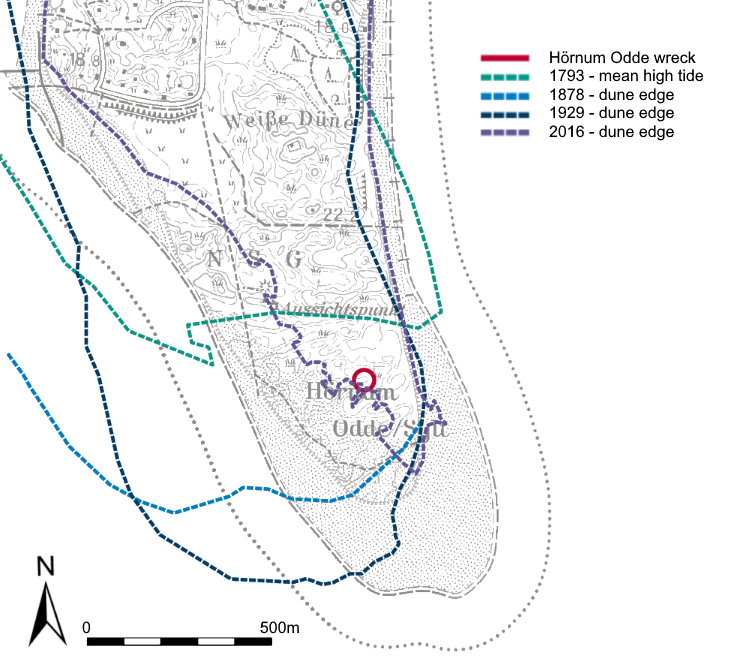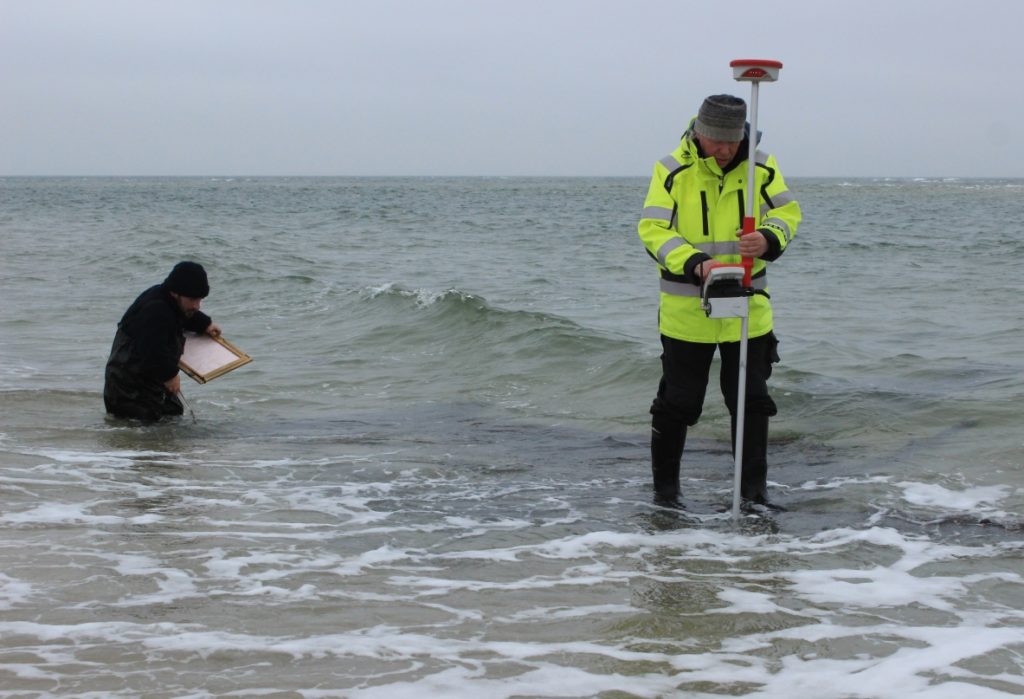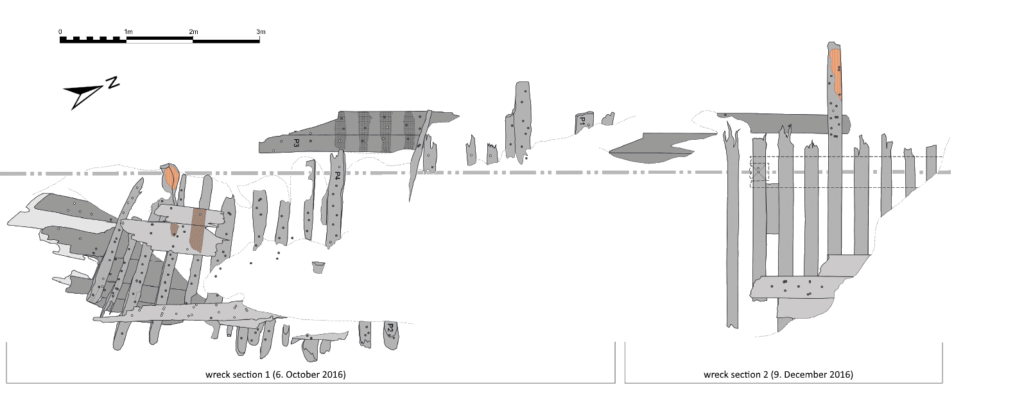A late 17th-century “Double Dutch” construction in the North Frisian Wadden Sea
On 3rd October 2016, an unknown shipwreck emerged at the southern spit of the island of Sylt as a consequence of an ongoing coastal erosion process. For about 300 years it had been covered by a sand dune, but in October the dune has retreated and the wreck lay unsheltered in a high energy intertidal zone and was only accessible at low tide in offshore winds. It was investigated by the responsible authority – the State Archaeology Department of Schleswig-Holstein (ALSH) – and the difficult site conditions necessitated a swift investigation before the wreck could be reclaimed by the sea, employing a SAPOS survey, structure-from-motion modelling, dendrochronological sampling as well as manual recording.



The study of the construction revealed several characteristics diagnostic for the “Dutch flush” method, a shell-first variant of the carvel method, as still practised in the Republic of the Seven United Netherlands in the 17th century and described by contemporaries like Nicolaas Witsen and Cornelis van Yk, e.g. the use of spijkerpennen (wooden plugs), a slender frame-system, floor-timbers that were not interconnected with futtocks, and massive planks bend over fire. Moreover, the wreck featured a double oak planking – known as “Double Dutch” – and the partially intersecting treenails that are concomitant with the addition of the second layer. With a terminus post quem of 1690, this is the latest “Double Dutch” hitherto known, casting doubt on the long-held belief that this way of construction was a fleeting phenomenon of the early 17th century.

While the floor-timbers in the midship section were largely made of pine, which could not be extracted for analysis, the provenance of the oaken planks and floor-timbers indicate an origin from the Vistula region for the former and Brandenburg for the latter. These are typical logging areas from were Dutch shipbuilders imported timber. Only very few wrecks with a “Double Dutch” construction are known today and most of these wrecks have been identified as ships of the Dutch East India Company. However, there are indications that also other ships featured a double-planked hull, like Dutch whalers heading to Spitsbergen, or Danish sandskuder, specialised in landing operations in the intertidal zone of the Danish Wadden Sea, so the ship’s ultimate identification remains an exciting enigma.
References:
- Zwick, D., 2021: A late 17th-century ‘Double Dutch’ construction in the North Frisian Wadden Sea: The case of the Hörnum Odde wreck on the Island of Sylt, Germany. In G. Boetto, P. Pomey, P. Poveda (eds.): Open Sea … Closed Sea. Local and inter-regional traditions in shipbuilding (Archaeonautica 21 / Proceedings of the 15th International Symposium on Boat & Ship Archaeology, Marseille 22-27 October 2018), pp. 203-209.
- Zwick, D. & Klooß, S., Das frühneuzeitliche Schiffswrack von Hörnum Odde, Sylt. In: Skyllis 17.2, 2017, 204-216.
- Zwick et al 2018: D. Zwick, J. Fischer, S. Klooß and H. Menzel. Das Wrack am Strand von Hörnum Odde, Sylt. In: Archäologische Nachrichten Schleswig-Holstein 2017, 2018, 140-147.
- Zwick 2018: D. Zwick, 300 Jahre unter der Düne verborgen: Das rätselhafte Schiffswrack von Hörnum Odde. In: Sölring Foriining Jahresbericht 2017/2018.




